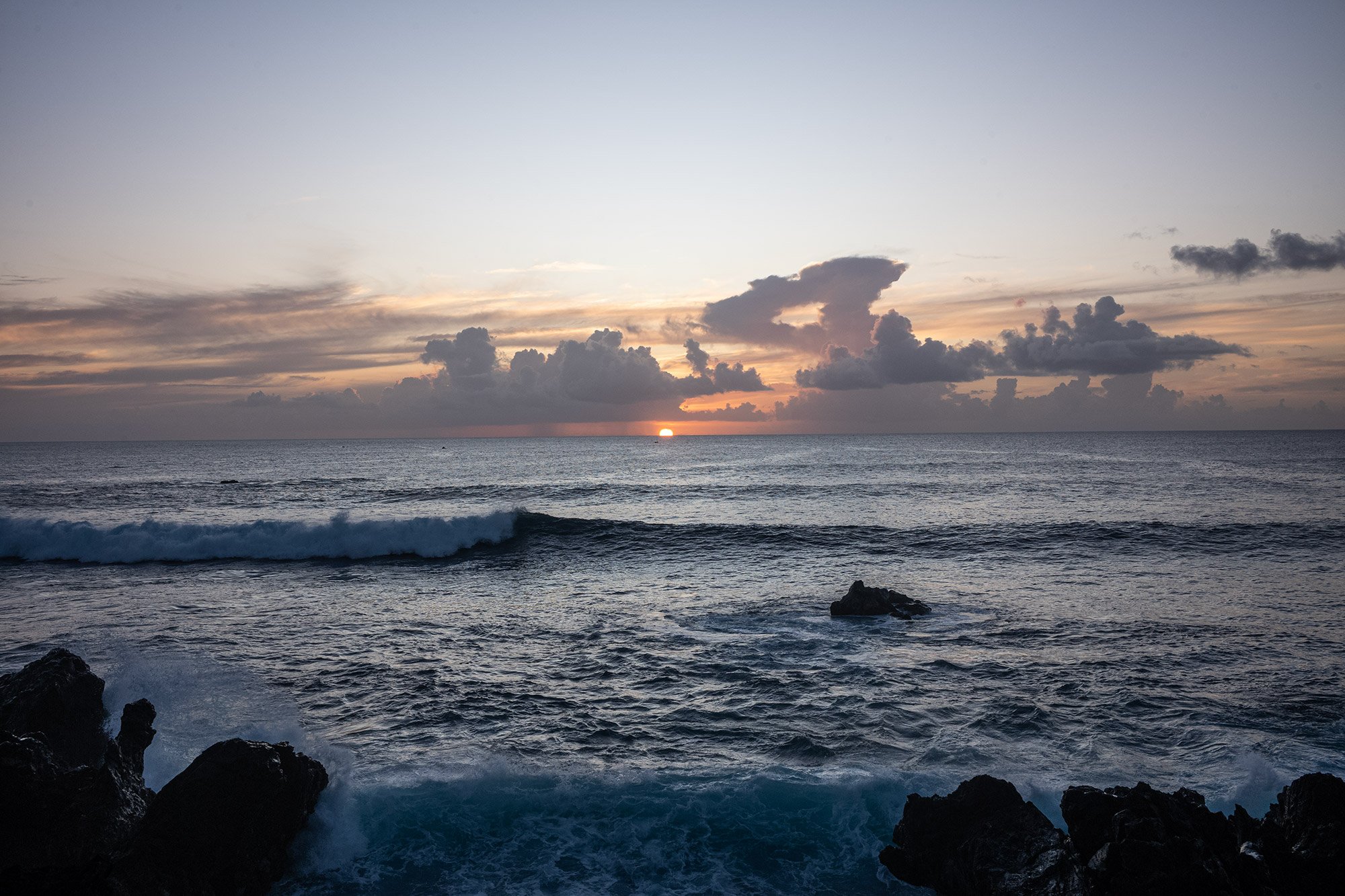
Easter Island: Chapter three
Hiking the northwest coast of Rapa Nui.
Heki’i’s mom drives us to the trailhead, dropping us off in the dark.
The last bit of road is bumpy and rough, but she does her best to get us as close to the start of the hike as she can before sending us on our way. The day is about to break and I fight the urge to put on my headlamp. It’s easier to see once my eyes adjust.
• • •
Most of the area we’re about to hike is unreachable by car. There are no roads but one, and Heki’i is dismissive of the person who put the road to his small ranch in. Otherwise, we’ll be walking on horse trails and cow paths across the volcanic landscape. And it’s only horses and cows that we’ll see as we hike. Even when we reach the ranch we’ll see no one. It’s not until we reach the beach and the town set up nearby that we’ll see another human.






As we walk the skies lighten and at one point Heki’i tells me to turn around so I can see the sun paint the clouds in purples and pinks. From our starting point we can see the lights of the town in the distance, but we’ll soon walk beyond being able to see them.




We walk and Heki’i shows me old chicken coops and caves. He shows me the foundations of old houses, formed in the shape of boats. He points out the depressions made in the rock to hold the poles that would form the frame of the house.
At one point he invites me into a cave from which we can look up out at the sky. I never would have seen the cave but for Heki’i, flush as it is with the earth. After squeezing back out of the entrance I walk around to stare down into it.
Rain threatens to fall upon us. In return, the water-logged skies offer us rainbows as if in compensation, and we see them rising up out of the ocean, reaching towards the land.




Moai show up in unexpected places, and I often don’t notice them until Heki’i points them out to me. At one point he gives me free reign to explore and I find two moai almost embedded into the rocks that once formed their platform. When I wander back to where he’s sitting he points out a large moai that lays on the ground a few hundred meters from us. I hadn’t even noticed it.

Oftentimes, the landscape reminds me of Iceland, and I have to blink twice and remind myself that I have not traveled in space nor time. Sometimes I take photos just so I can compare them to photos i’ve taken in Iceland to make sure I’m not imagining things.

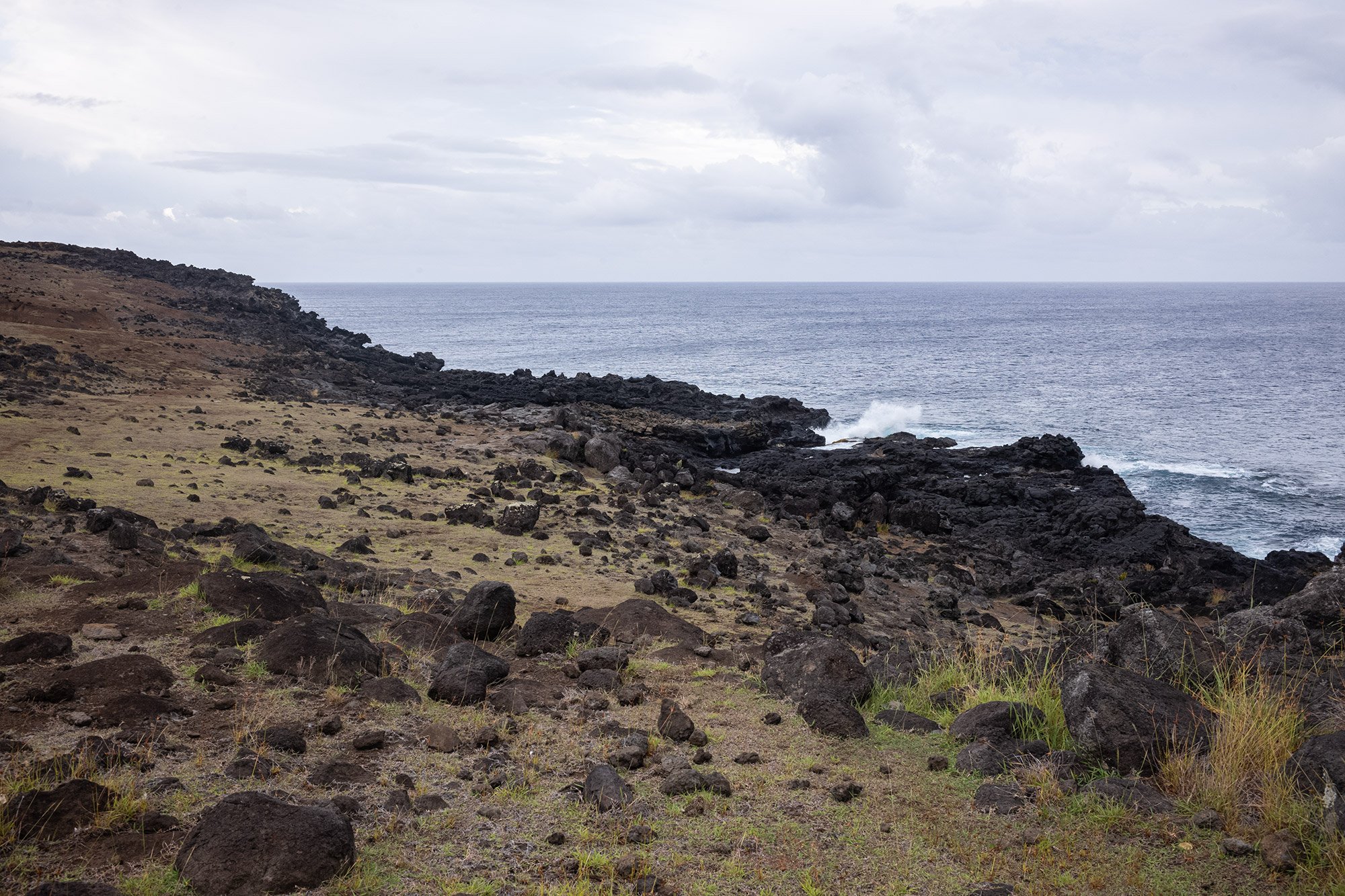

Heki’i stops me to show me some carvings in some large stones we pass. Later, he leads me into a cave to show me more carvings made on the walls.



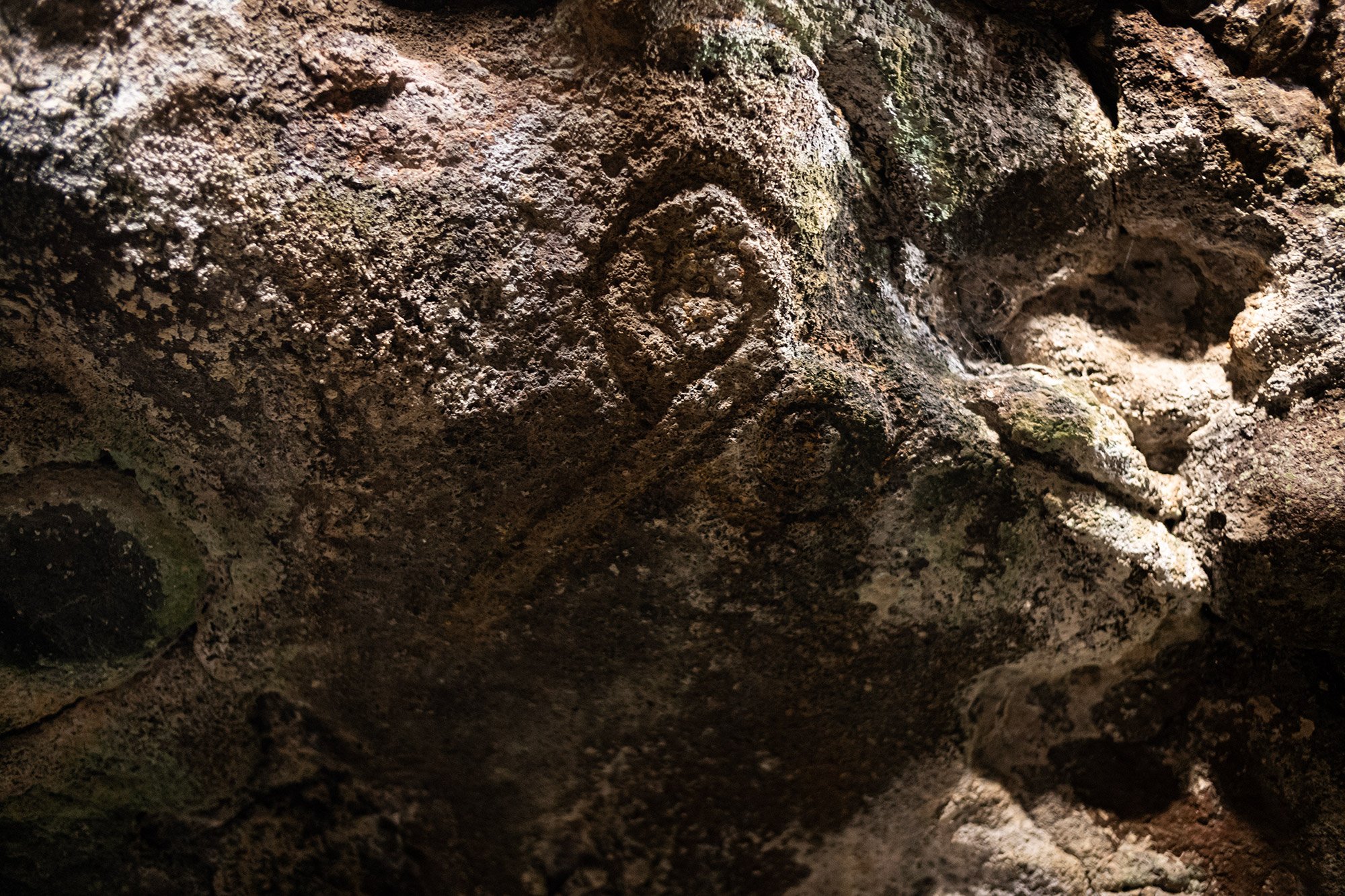

From the caves we continue walking. Heki’i tells me that we’re more than half done with our hike. I wasn’t wondering but I was and I am not sure if I’m glad to know how much time is left or not. Another rainbow reaches from out of the ocean over the island and we pause to admire it for a moment before pressing on.




Soon we arrive at a ranch. A horse lumbers towards us and lets us pet it. Heki’i tells me that this is the only building and road that reaches into this part of the island. The owner of the land started the road so he would have an easier way of reaching his ranch. Today he’s nowhere be seen.
As we walk on the horse follows us the length of its pasture until the fence keeps it from continuing onwards. Heki’i tells me that they used to capture wild horses in this area, using the fences to corral the horses once they had chased them down from the mountains. He looks wistful as he conjures up the memory, the excitement of chasing the horses down flashes in his eyes.

A rainstorm pummels us as we leave the ranch. It’s a short storm but packs a lot of water. And then it’s over almost as soon as it started. As we look back, we spot another rainbow. This time we can see the full arch as it reaches over the ranch, starting in the hills to the east and ending in the ocean to the west.


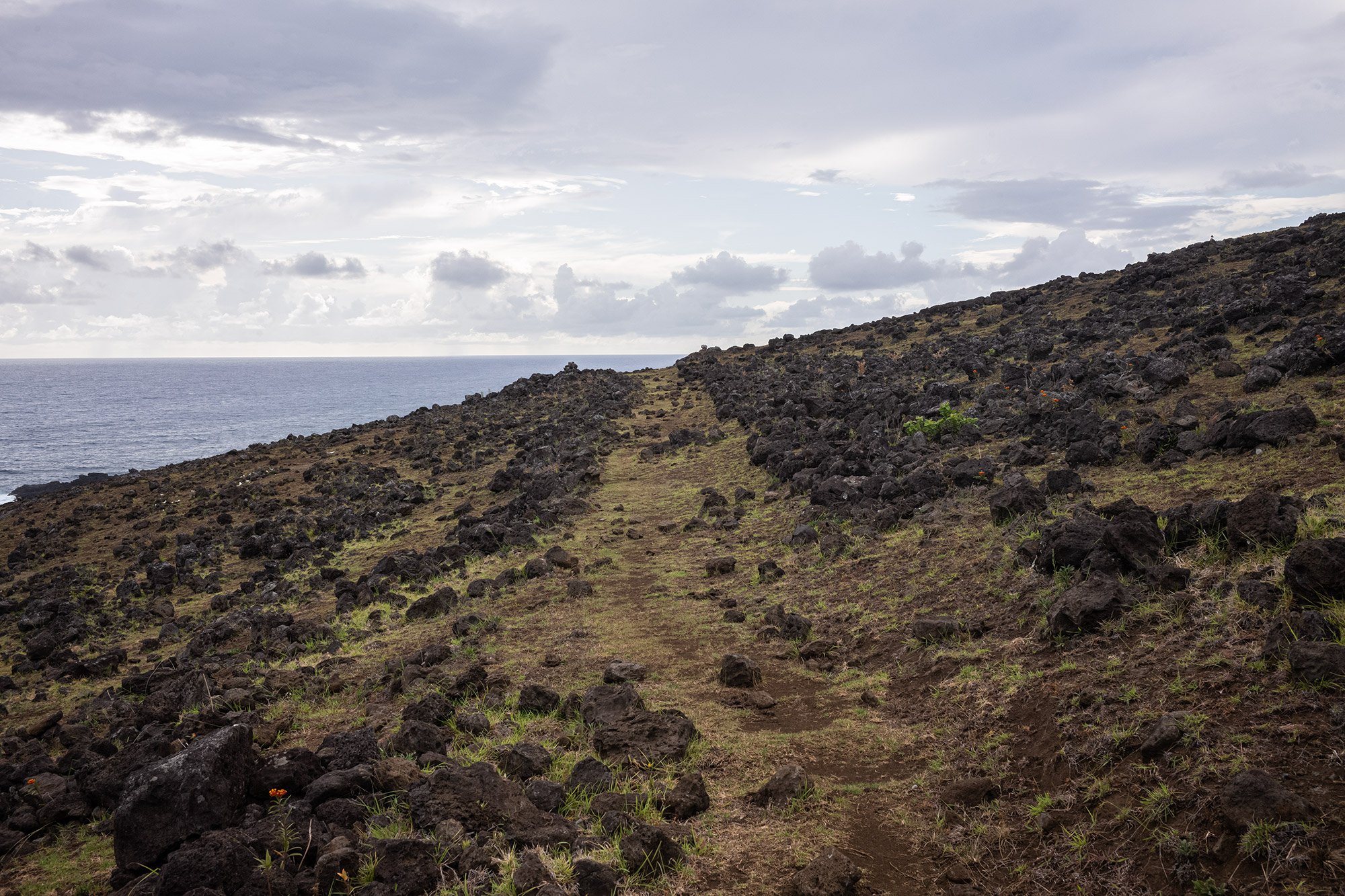
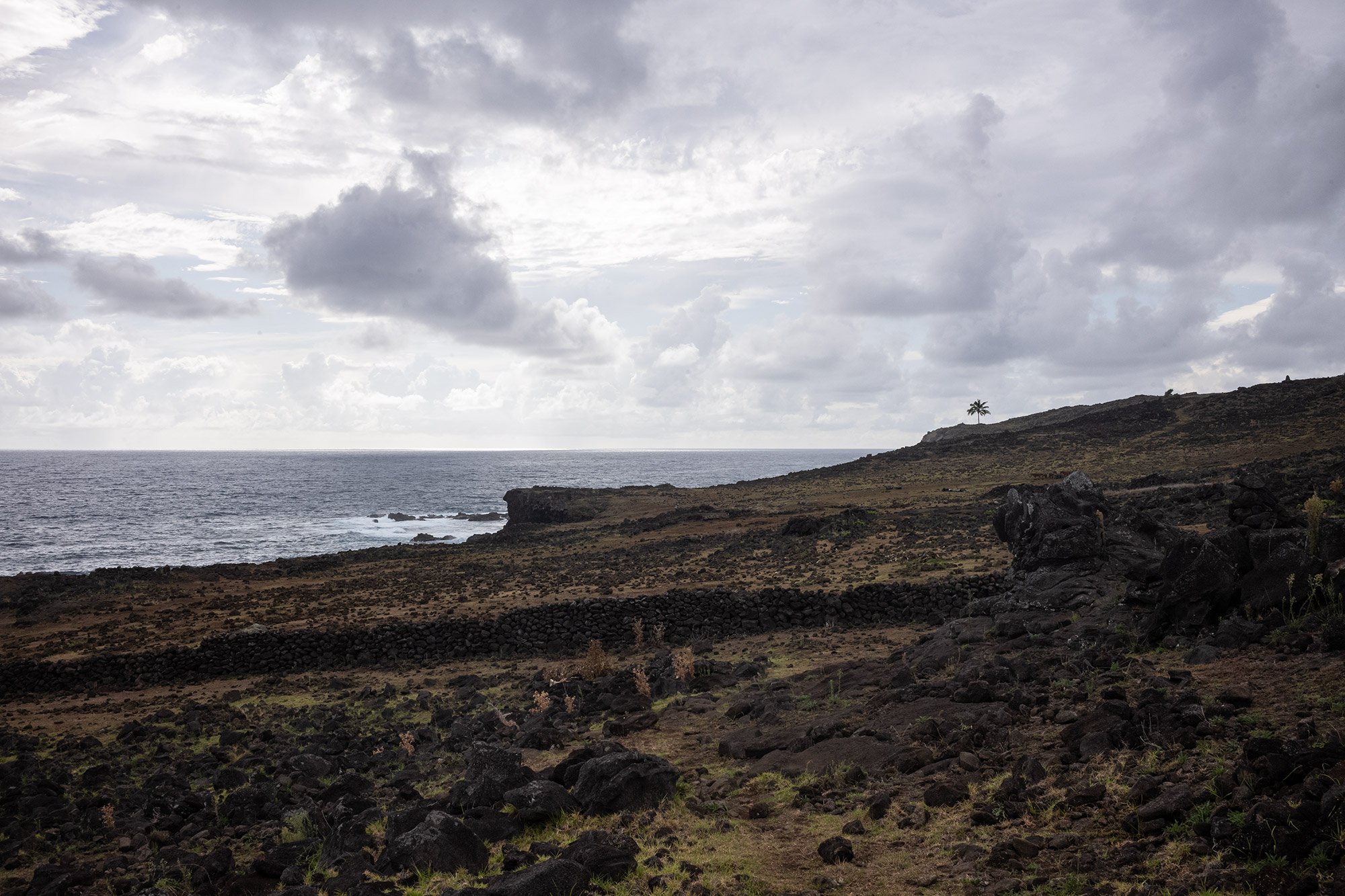
As we pass from one field to another, Heki’i tells me that there’s a number of dead cows in the one we’re about to enter. I ask if they’re hunted by animals but he tells me no and it’s a little unclear to me why they have died. It seems they may have died of natural causes but I’m not entirely certain. They lie in repose in various states of decomposition. You could mistake some for being asleep.





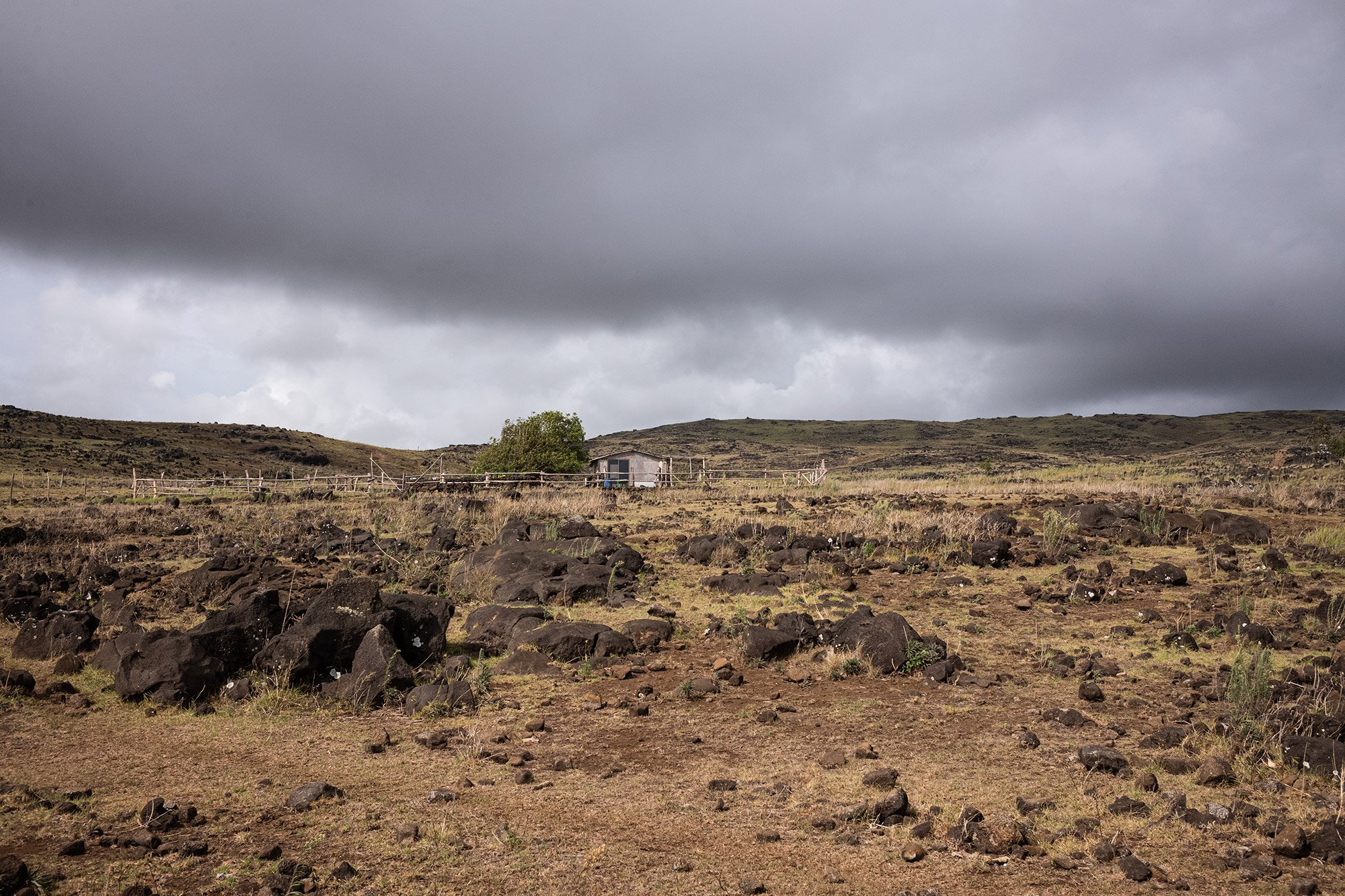

As we near the beach we start to see more signs of civilization. Small farms and settlements start appearing and we can see a dirt road formed from the tracks of cars that have passed by often. Heki’i tells me they built a house for one of his cousins or uncles here, but he prefers to spend his time in town. The structure lies empty, just up the hill from the road.

The beach is beautiful. It’s one of two sand beaches on the island. We’ve made the hike in just over four hours. Heki’i tells me it usually takes around five to six, depending on the group, but we haven’t paused much on our walk.
I am eager to sample some seafood empanadas, but none of the lunch huts are open. One woman is setting up and asks me the time. I tell her it’s 11:00 am. She said they won’t open until around 12 or 12:30. I thank her and decide to go for a swim. I change in the bathrooms and leave Heki’i to hang out by the restaurants as I make my way to the beach and the water.




The water is perfect and I swim and float in the ocean for a bit before returning to the beach. I find a spot in the shade of a palm tree and fall asleep. When I wake up it’s just noon and I decide to take another dip before heading up to see if the restaurants are open.
I run into Heki’i on my walk back up to the huts for lunch. He tells me his mom has already arrived to take us back to town. Seafood empanadas will have to wait for another day.
She has with her her youngest son and Heki’i, her eldest, holds onto him the entire drive back to Hanga Roa. I catch him looking back at me with curiosity as we drive.


Back home I shower and change. I eat lunch in town and have an ice cream. A sea turtle hangs out in the small harbor and children dive into the waters nearby. It’s a warm afternoon and I am tempted to get my bathing suit and join in with them, but decide to stay dry.
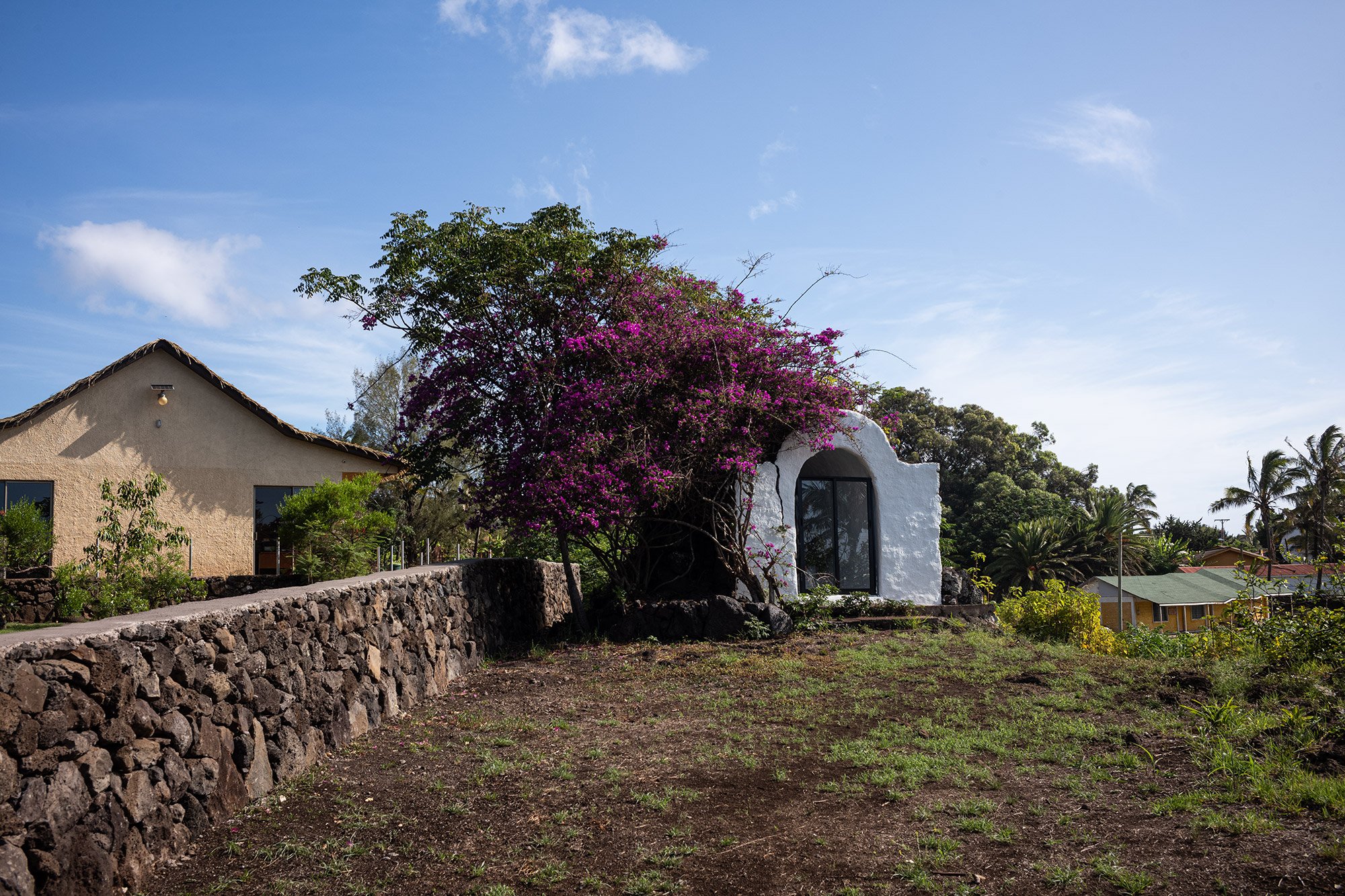




For the sunset I walk to the Mirador de las Olas, past a huge hotel complex that has taken over this part of the island. A few people have parked themselves on benches to await the spectacle, and as the hour draws near a few cars come and park on the embarkment. It’s a peaceful scene, marked by the sound of waves crashing on the volcanic rocks below.
No one seems to talk as the sun sets, hiding behind clouds before it emerges just before it sinks below the ocean. And then, one by one and then all at once, people leave, their shadows merging into the oncoming night.
18 February 2023
🗿


